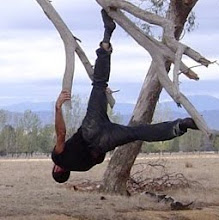
Step 2. Break up and weed existing soil at the base of the bed. If your soil is clay add some river sand and lime, if your soil is sandy add some clay and manure.

Step 3. Using newspaper, cardboard or some twentieth century art, cover the soil in a thin blanket. This barrier will act as a weed mat and help lock in moisture, which also encourages worms. Wet down this layer with water to start the decomposition process and help keep it from blowing away.

Step 4. Add a layer of straw, fallen oak leaves or sugar cane mulch. This organic matter will slowly break down, fixing carbon in the soil. A good soil requires a balance of nutrients, carbon, nitrogen and diverse microbial life, which will mitigate pests. Never use synthetic fertilisers or pesticides, you want your soil to hum loosely, not fear life.

Step 5. Finish the layers with composted soil. I have used part mushroom compost here with my own home-brewed one. Lightly compress or flatten the soil with a board and sow your seeds.

Step 6. Protect your seeds from your free-ranging hens. Now it's time for a well deserved glass of Astrid's dark chocolate stout.












